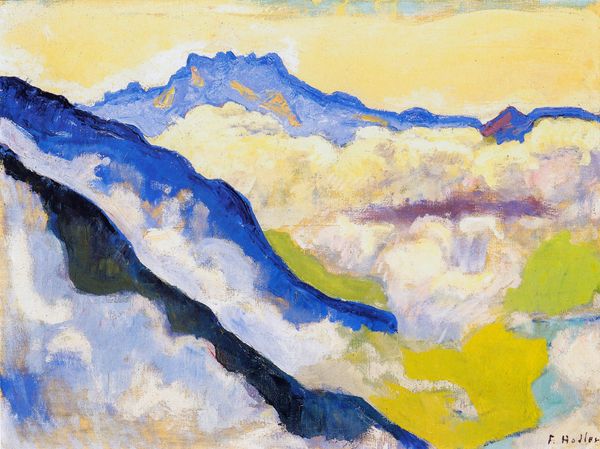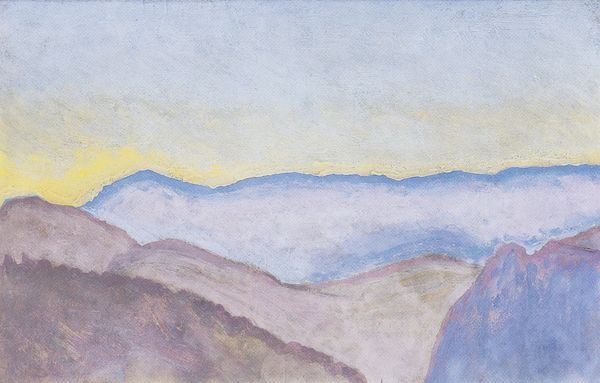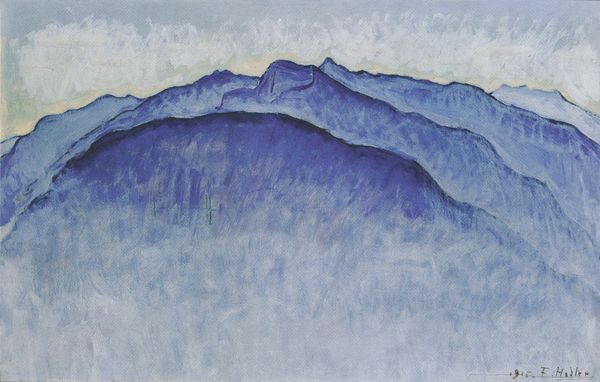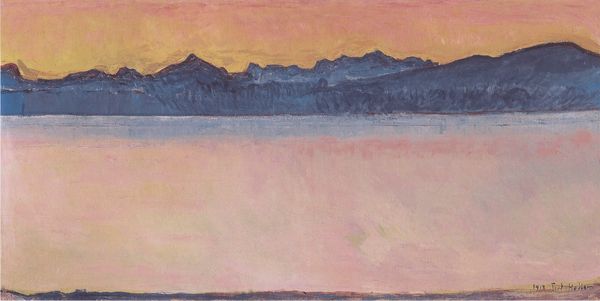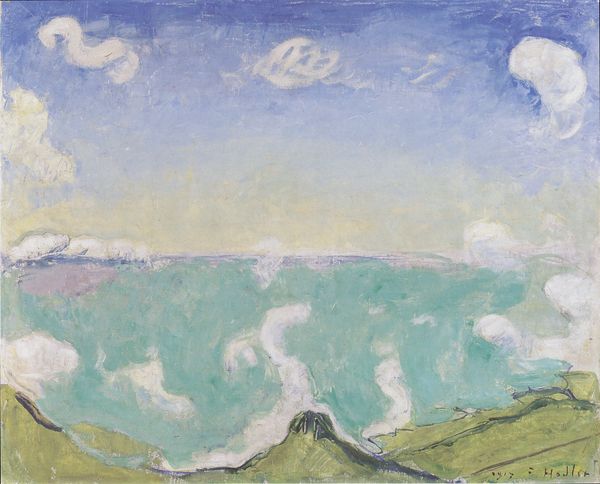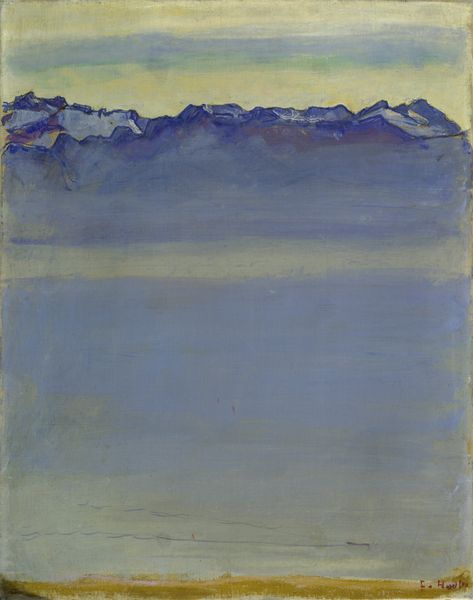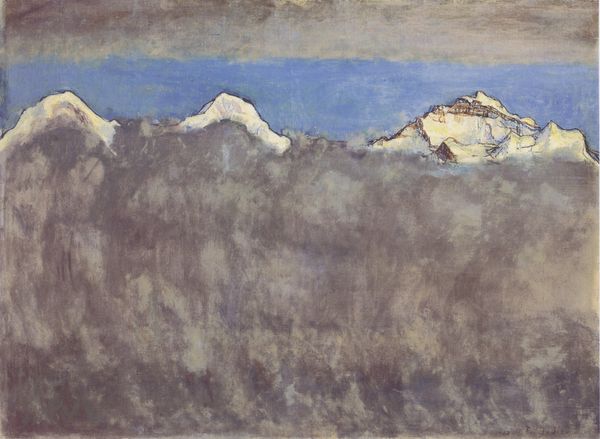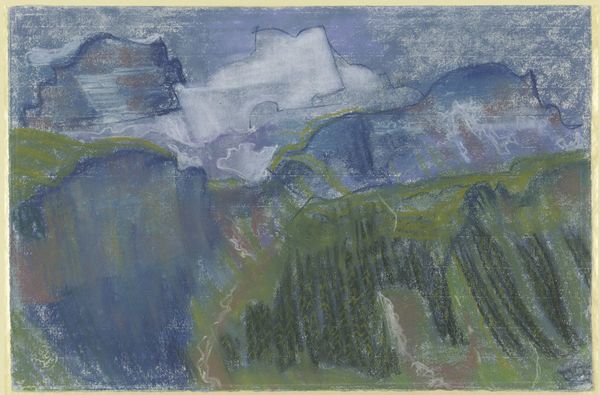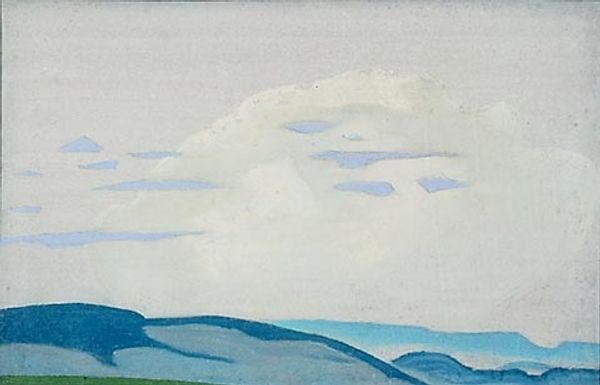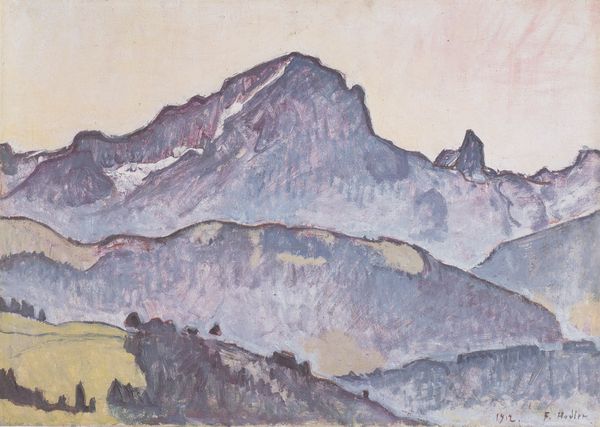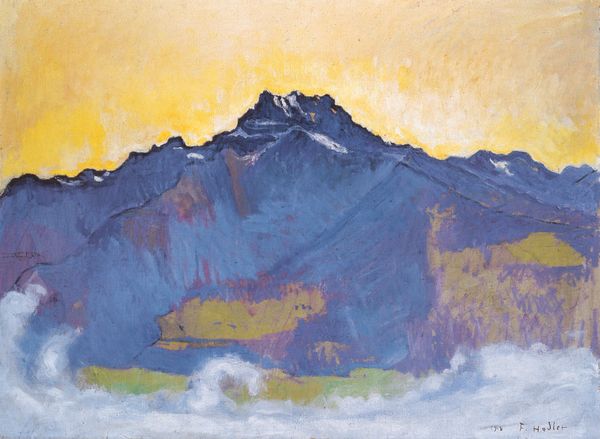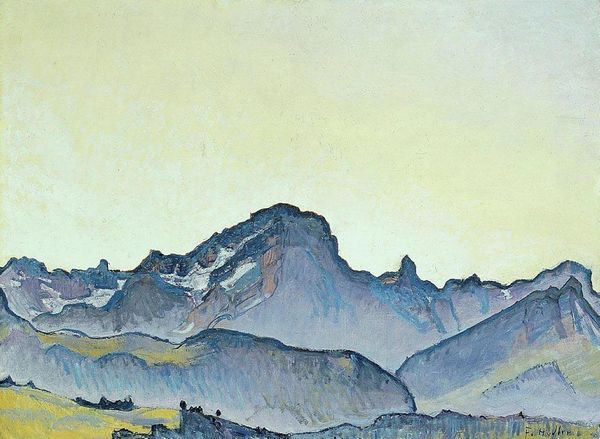
Dimensions: 38 x 50.3 cm
Copyright: Public domain
Curator: This is Koloman Moser's "Mountain Ranges," painted in 1913. Look at the delicate layering of watercolour and oil; it gives the landscape a dreamlike quality. What are your first thoughts? Editor: Ethereal, almost unsettlingly so. Those pastel colors, the hazy outlines... it's a landscape, but drained of earthly weight. Curator: Absolutely. Moser was working within the Art Nouveau movement, and this piece showcases a fascination with capturing mood and subjective experience. He's not simply depicting mountains. Editor: More evoking an idea of mountains, a romantic ideal perhaps. I'm intrigued by the process – watercolor under oil – how did that affect the painting's reception? Was this considered radical at the time, playing with typical notions of landscape painting? Curator: It definitely challenged expectations. Traditional landscape art served to affirm national identity or celebrate land ownership. Moser is exploring interiority, inviting a sense of introspection that aligns with larger shifts within early 20th-century artistic practices. This painting, being displayed publicly, challenged those traditional, very static interpretations. Editor: I notice how the social changes occurring impacted how we understand the art. Given this period saw huge socio-political change in Europe, from industrial unrest to impending war, does the escapism of "Mountain Ranges" offer some refuge? Is this partly what resonated with audiences then? Curator: That’s astute. Art became a realm of the aesthetic in opposition to those shifts, but its placement and visibility shaped its appeal and impact on broader conversations of land and culture at a turning point in how they were publicly displayed and understood. Editor: Well, understanding its layered history allows for a very nuanced perspective on "Mountain Ranges" and how landscape paintings had and would function moving into the century. Curator: Indeed, reflecting on its creation within this period deepens how it invites engagement and prompts one to consider this dialogue surrounding social themes.
Comments
No comments
Be the first to comment and join the conversation on the ultimate creative platform.
